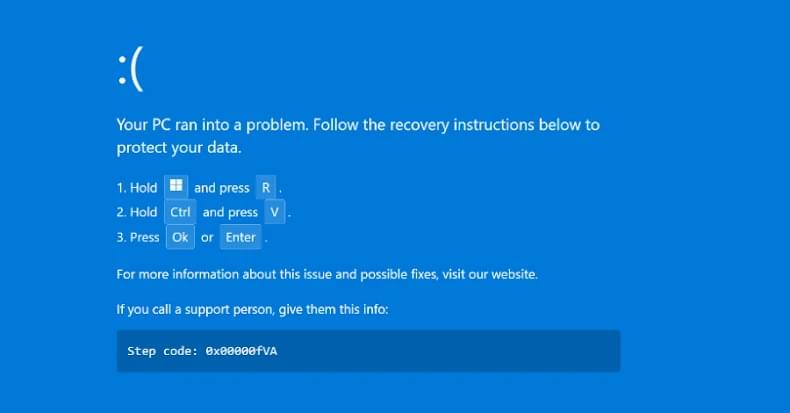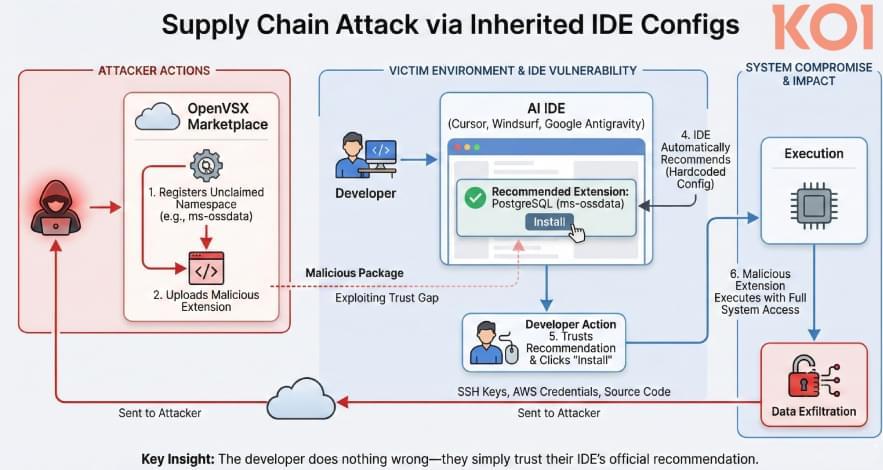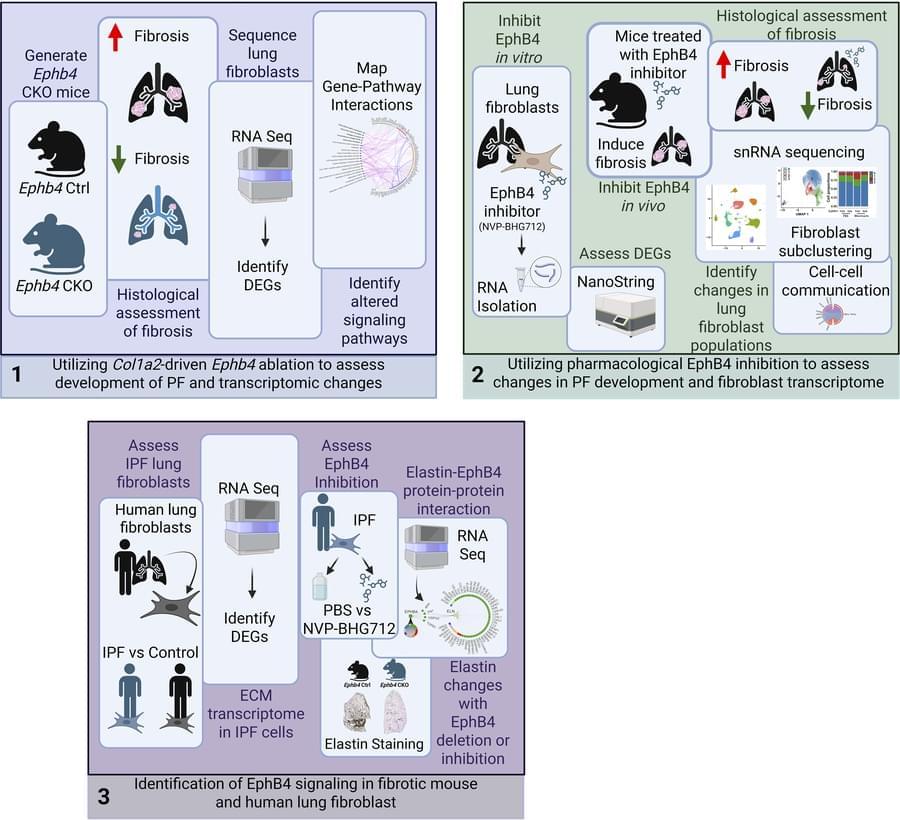A new PHALT#BLYX campaign targets European hotels using fake Booking.com emails, ClickFix lures, PowerShell, and MSBuild to deploy DCRat malware.


A new PHALT#BLYX campaign targets European hotels using fake Booking.com emails, ClickFix lures, PowerShell, and MSBuild to deploy DCRat malware.


The Kimwolf botnet, an Android variant of the Aisuru malware, has grown to more than two million hosts, most of them infected by exploiting vulnerabilities in residential proxy networks to target devices on internal networks.
Researchers observed increased activity for the malware since last August. Over the past month, Kimwolf has intensified its scanning of proxy networks, searching for devices with exposed Android Debug Bridge (ADB) services.
Common targets are Android-based TV boxes and streaming devices that allow unauthenticated access over ADB. Compromised devices are primarily used in distributed denial-of-service (DDoS) attacks, proxy resale, and monetizing app installations via third-party SDKs like Plainproxies Byteconnect.


Mohit Kapoor & team identify EphB4 receptor as a crucial mediator of pulmonary fibrosis that regulates genes involved in ECM organization, ER cargo concentration and protein trafficking in fibroblasts.
4Department of Epidemiology and Biostatistics, Western University, London, Ontario, Canada.
5Department of Biostatistics, University Health Network, Toronto, Ontario, Canada.
6Dalla Lana School of Public Health and Department of Statistical Sciences, University of Toronto, Toronto, Ontario, Canada.

Recent Research by Charmaine R. Rock of Hudson Institute of Medical Research et al. examines antenatal melatonin for cardiovascular deficits in fetal growth restriction 🫀 💊
🔗 📜 Read the study here.
The results of the present study indicate that melatonin has the potential to mitigate the progressive development of impaired endothelium-dependent vasodilatation in growth-restricted lambs. However, this benefit is associated with transient impairment of endothelial function on the first day of life. It would be prudent to investigate the physiological implications of this early vascular dysfunction during the critical period of cardiovascular adaptation to postnatal life. Adjustments to the antenatal melatonin treatment regime, such as tapering the dose before and after birth, could be explored to support a smoother cardiovascular transition on the first day of life.
Additionally, because the present study was conducted up to 4 weeks of age, equivalent to an ∼1-year-old human infant, extending the study outcomes into adulthood is important to determine whether endothelial function is sustained or continues to improve with age, potentially achieving full restoration to the relaxation abilities observed in control lambs. Furthermore, given that functional assessment of the carotid artery was not possible in our study, future research should include such testing to provide a more comprehensive understanding of how FGR impacts vascular function.
The present study provides novel insight into the short-and longer-term, and region-specific impact of melatonin on the cardiovascular system. Our findings demonstrate that, although antenatal melatonin improves the contribution of NO to endothelium-dependent vasodilatation in the femoral artery of newborn FGR+MLT lambs, it is accompanied by an overall reduction in femoral endothelium-dependent vasodilatory capacity. Notably, this reduction in endothelial function is transient and improves by 4 weeks of age, which contrasts with the progressive impairment of endothelial function seen in untreated FGR lambs. Immunohistochemical analysis revealed elevated oxidative stress and inflammatory markers in the femoral artery of 4-week-old FGR+MLT lambs.

Chronic obstructive pulmonary disease (COPD) is a leading cause of morbidity and mortality globally. Effective management hinges on early diagnosis, which is often impeded by non-specific symptoms and resource-intensive diagnostic methods. A study published in the journal eBioMedicine assesses the effectiveness of electrocardiograms (ECGs) analyzed via deep learning as a tool for early COPD detection.
Mount Sinai researchers utilized a Convolutional Neural Network model to analyze ECGs, or medical tests that record the heart’s electrical activity, and can detect COPD. The primary outcome was the accuracy of a new clinical COPD diagnosis, as determined by International Classification of Disease codes. They performed an evaluation using Area-Under-the-Curve (AUC) metrics, derived by testing against ECGs from patients at five hospitals within the Mount Sinai Health System who represented a demographically diverse patient population in New York City.
They examined data from 2006 to 2023 within the GE MUSE system that exports electrocardiograms as individual XML files containing raw waveforms. The experts also used ECGs from patients at another hospital and ECGs of patients with COPD within the UK BioBank to expand the cohort and validate the analysis.


It is a central question in neuroscience to understand how different regions of the brain interact, how strongly they “talk” to each other. Researchers from the Max Planck Institute for Mathematics in the Sciences Leipzig, Germany, the Institute of Mathematical Sciences in Chennai, India, and colleagues demonstrate how mathematical techniques from topological data analysis (TDA) can provide a new, multiscale perspective on brain connectivity. The study was published in the journal Patterns.
With the rise of large neuroimaging datasets, scientists now work with detailed maps of brain connectivity—network representations that show how hundreds of brain regions fluctuate and coordinate their activity over time. But making sense of these enormous networks poses a challenge: What patterns matter? Which changes signal healthy aging, and which reflect differences associated with autism spectrum disorder (ASD)?
The study introduces a mathematical innovation that helps answer precisely these questions. Researchers applied persistent homology, a tool from topological data analysis (TDA), to detect how brain connectivity reorganizes during healthy aging and in ASD.

eLife Assessment
This fundamental study provides new evidence of a change in how microglia survey neurons during the chronic phase of neurodegeneration, which researchers studying neuroinflammation and its role in neurodegenerative disease should find interesting. In this research, using time-lapse imaging of acute brain slices from prion-affected mice, the researchers show that, unlike in healthy brains, microglia become reactive, lose their territorial boundaries, and become highly mobile, exhibiting “kiss-and-ride” behavior, migrating into brain tissue and forming reversible, transient body-to-body contact with neurons. The evidence is compelling, with well-executed time-lapse imaging, good quantitative analysis across several disease stages, pharmacological validation of P2Y6 involvement, and the very surprising finding that this mobile behavior persists after microglia are removed from the brain.